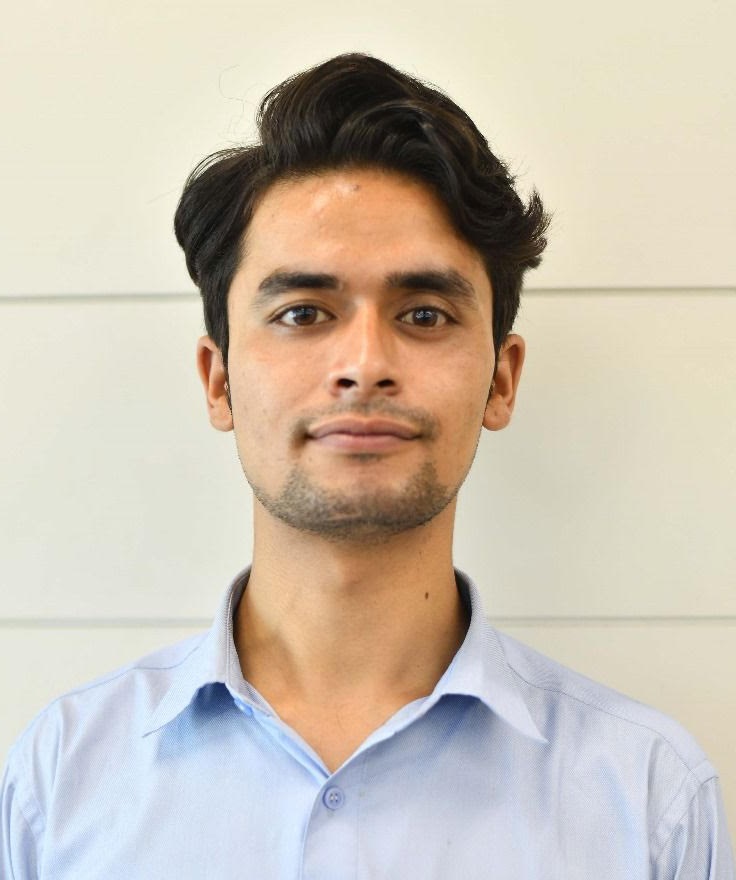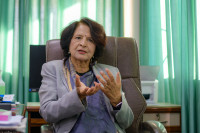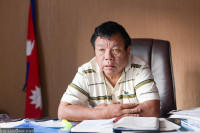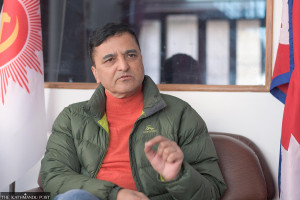Interviews
Gen Z movement mandated reform in political parties
Leaders are still busy blaming each other. But the focus must be on paving the way for the representation of Gen Z in the party structure, perhaps through an amendment in Congress statute.
Biken K Dawadi
In the aftermath of September’s Gen Z movement, only one of the three traditional parties seems to have captured, albeit only in part, the spirit of the movement. The Gen Z-ers in the Nepali Congress have demanded internal reform in the party and urged the leadership to reflect on their past mistakes. They have also sought proper youth representation in the party. The Post’s Biken K Dawadi sat down with Bikal Rai, an initiator of the ‘Gen Z for 7D’ group in the Congress, to discuss the origin of the group, its vision for the party and the relevance of such sister wings of parties. Excerpts.
What was the origin of the ‘Gen Z for 7D’ group, which is now seen as campaigning for change in Nepali Congress (NC)?
On September 8, we were working on organising a Nepal Student Union-led united student protest demanding passage of the School Education Bill the next day. The Gen Z protest that day changed our priorities. In a way, the protests were valid, but the ensuing vandalism and arson on September 9 were not. The desire for a changed statecraft and proper adherence to the rule of law was an agenda not limited to the protesters but all of us Gen Z-ers. We, Gen Z-ers in the Congress, too desired change. At the same time, we realise that there is no alternative to political parties in a democracy.
On the night of September 9, it struck me: Popular alternative leaders Balen Shah and Rabi Lamichhane were inciting violence and orchestrating their own prison break, respectively. Gen Z representatives were indulging in populism with agendas such as the promulgation of an interim constitution. In this situation, amid all the chaos, if any group were to rebuild the state in the spirit of the Gen Z protest, it would have to be Gen Z-ers within a political party that can accommodate that spirit.
I talked to Gen Z-ers in the party, and as our thoughts matched, we gave shape to the group as Gen Z for 7D (Dignity, Democracy, Dedication, Discipline, Digital transformation, Delivery and Development) under the change-centric Nabodaya campaign.
We prepared a banner cautioning the party leadership to accept the spirit of the Gen Z movement in the following days. There was considerable pressure not to display it at the party headquarters, but we prevailed. However, within hours, party leaders, with assistance from the Nepal Police, had brought down the banner.
Why did the group come into prominence now? Why not before the Gen Z movement?
It is already late for the old parties to change their ways. If we further delay the change, it will be too late. The old guard faces an existential question: Reform or become obsolete. It is a do-or-die situation. Just look at who the individuals who have become the prime ministers of Nepal in the past two decades. The same leaders still contend for the position. One of the common agendas of the Gen Z movement was also to bring about change in party leadership. We, Gen Z-ers in the Congress, envision this change too.
It is not that we were not seeking reform in the party before the protests. We initiated a SPARK movement through the NSU at the party. The party leadership did not readily accept the changes envisioned by the movement. Our other efforts were sidelined too. This time, the efforts are organised and will hopefully bring about positive changes in the party.
What was the reaction of Congress leaders when the group came into prominence?
Some leaders readily accepted the spirit of the Gen Z movement; others tried to undermine it. Both general secretaries of the party, Gagan Thapa and Bishwa Prakash Sharma, welcomed the initiative. Some other leaders, perhaps, felt insecure with their positions in the party under scrutiny. Their intellect asked that they accept the spirit of the movement, but their behaviour dictated that they cling to power.
One can clearly see their tendencies in the discussions at the party’s meetings. Leaders are still busy blaming each other for the situation and delaying the party’s general convention. But the focus must be on paving the way for the representation of Gen Z in the party structure, perhaps through an amendment in party statute. It is vital to hold the general convention next month, but some leaders are still trying to push the date back, driven by their own interests.
How are different camps in the party seeing the Gen Z movement?
The Gen Z movement did not simply create a mandate for fresh representatives in parliament and government; it also gave a mandate for reform in political parties. The Congress needs to change in the general convention in line with the spirit of the movement.
There are conservative and progressive groups within the party. The conservative groups, currently seen as stronger, are calling for a postponement of the general convention, which is not the right way forward. We need a fresh mandate from the grassroots to reform the party. For this, a timely general convention is a must. The Gen Z group in the party has planned a signature campaign to make the leadership understand the need of the general convention at the earliest.

What other activities and initiatives does the group plan?
In addition to the signature campaign to amplify the voice of Gen Z, we have also started a survey of youths supporting the party to urge the party to make necessary reforms. We want to give the party leadership a better picture of the changes envisioned by the Gen Z movement. The signature campaign and survey will hopefully caution the party hierarchy that the party must change. In addition to the two initiatives, we have also started working on a strategic paper on how a proper representation of the young generation can be ensured in the party.
What do you mean when you speak of the need for the party to change its ways? What kind of vision does the Gen Z group in the NC have?
It is time for the Congress leadership to reflect on its flaws. One such mistake was the formation of a coalition government of the two biggest parties in the parliament. This practice rendered the opposition in parliament ineffective.
We also need to strengthen the institutions in the party instead of the individuals. The trend of changing the direction of the party with a change in party leadership is detrimental. The NC has always taken pride in being a mirror of society. We envision a party that is connected to the grassroots.
The Gen Z movement has also warranted structural changes in the party. Right now, power is concentrated in the party president. The president is the parliamentary leader of the party, which is in part the result of the tradition of the party president selecting candidates for general elections. Further, if a political leader wants to be the prime minister through the party, they have to be the party president too. All of these practices must be changed. When the party president is the prime minister, their work priorities are divided between the party and the government. When they are also the parliamentary party leader, their focus is divided too.
A good example for this separation of power has been set by the newly-formed Gatishil Loktantrik Party, which bars its officebearers from contesting elections. We can also draw examples from the Bharatiya Janata Party (BJP,) which does the same. Have you seen PM Narendra Modi in the party leadership since he became the prime minister?
What is the relevance of the sister wings of the political parties in the changed political context?
The minister selection for the interim government is a special case. The narrative that one can be a minister without having come through the structures of political parties needs some analysis. A complete political leader needs to understand the various aspects of being a political leader, including statecraft, diplomacy, grassroots politics, development and contemporary international practices. It is difficult to imagine an individual who has all of the said qualities. And it is also true that the sister wings, which are supposed to be the schools for political leaders, have failed to produce such individuals. But what is the alternative?
Technocrats have expertise in their respective sectors, but they too lack the completeness required of political leaders. Kathmandu’s mayor, Balen Shah, might be a good engineer, but does his recent Facebook post suggest that he has a good understanding of diplomacy? He has berated friendly nations like India, China and the US in the post. Does his action against street vendors suggest he understands the grassroots-level of politics?
While the state needs to divert attention to educating the public about the political system, the parties can also do so and produce capable leaders through their sister wings.
What is the relevance of older political parties like the Nepali Congress after the Gen Z protests?
The NC has been a witness to all the political changes in the modern history of Nepal. The institutional memory of the party is incomparable. We welcome the formation of newer political parties. But formation of parties to trick the people is not a good practice.
Do the NC’s Gen Z-ers hope to hold dialogue with the active Gen Z representatives?
Gen Z, as a generation, is not limited to certain individuals. Gen Z-ers come from all backgrounds, including political parties. There is at least one Gen Z-er in each household of Nepal. All of us want the same thing: An end to corruption and good governance. We should not deviate from these two fundamentals. All of us need to create a united front to do justice to the movement. Dialogue between Gen Z representatives and the Gen Z-ers from political parties is essential to this goal. As for who will bring these groups together, the Congress is forming a task force to facilitate such a dialogue.




 14.12°C Kathmandu
14.12°C Kathmandu












